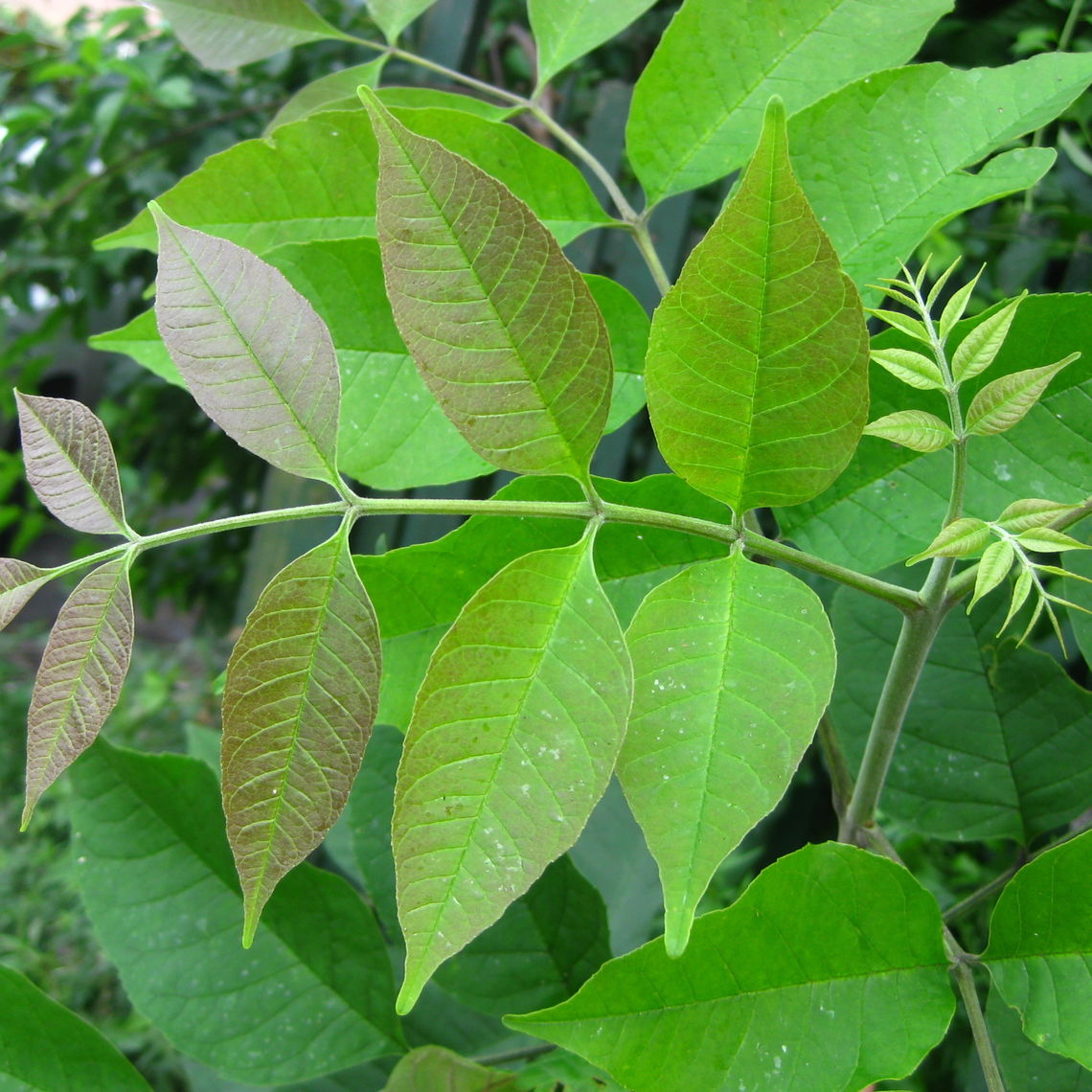White Ash (Fraxinus americana)
The white ash is the largest of the native ash trees. It has pointed, oval, dark green leaves that turn red-purple, maroon, and yellow in the fall. A single tree can display all of these colors at once and will often portray them in a color gradient: darker red leaves appear towards the top of the tree and lighter yellow leaves toward the center. The white ash is also a valuable timber tree and is often used to make tool handles, oars, garden furniture, and sports equipment. In fact, white ash wood is used to make Louisville Slugger baseball bats. This tree attracts birds, mammals, and insect pollinators.
Family: Oleaceae (Olive)
Characteristics: The leaves are odd-pinnate compound (leaflets attached in pairs along stem with one on top), with 5 to 9 dark green leaflets, each 2-6 inches long, ovate, and dark green with white undersides. In the fall, the leaves at the top of the tree will usually turn red-purple or maroon, and leaves toward the center of the tree will turn yellow. Clusters of petalless purple flowers appear in April-May before the leaves emerge. Fertilized female flowers will give way to samaras (paired winged seeds). Male and female flowers appear on separate trees. Bark is gray-brown, ridged, and furrowed in a diamond shaped pattern. When young, this tree is irregularly pyramidal to upright-oval, becoming rounded with age. This tree grow 50-80 feet high and wide.
Foliage: Deciduous (leaves lost seasonally)
Geographic Origin: Eastern North America (native)
Cultivation Notes: Requires medium maintenance. Does best in full sun. Prefers moist and well-drained soils. This tree is moderately drought tolerant, and generally tolerant of urban conditions. It should be planted in wind protected areas. This tree is susceptible to emerald ash borer, and so is not permissibly sold in all states.
Number on Campus: 6
Sources: Dirr, Morton Arboretum, Missouri Botanical Garden




